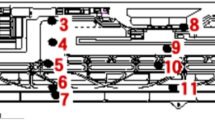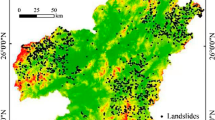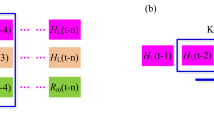Abstract
Consolidation settlement refers to the deformation of soil due to external forces resulting in a reduction in the soil volume, posing a significant challenge for construction on soft ground due to the high compressibility of the soil. Methods, such as preloading and prefabricated vertical drains, have been applied to enhance the strength of the ground and accelerate the consolidation process. However, measurement-based methods, which are commonly used in practice, tend to produce inaccurate results when the measurement records are limited, and the prediction results may have a large variance depending on an engineering judgment. This study aimed to overcome these limitations by developing a long short term memory (LSTM) based model for predicting consolidation settlement with improved accuracy. The model was evaluated through 120 cases with different amounts of training data (10%–70%) and was compared with practical methods such as the hyperbolic and Asaoka methods. The LSTM model outperformed the practical methods, with an average RMSE and MAPE of less than 0.1m and 2%, respectively. The model was also capable of predicting the final settlement with an average MAPE of less than 3% regardless of the amount of training. Statistical analysis have also indicated that the LSTM model had the highest probability of accurately predicting the settlement. The results of this study indicate that deep learning algorithms can be successfully used to predict consolidation settlement and provide highly accurate predictions for construction projects on soft ground. This study has the potential to assist the design and construction of civil engineering projects.















Similar content being viewed by others
Data availability
The datasets generated during and/or analysed during the current study are available from the corresponding author on reasonable request.
References
Li C, Xue Q, Jin D (2023) Analytical solutions for one-dimensional large-strain nonlinear consolidation of soft soils by considering a time-dependent drainage boundary. Int J Geomech 23:04023006
Cui P, Cao W, Xu Z, Li H, Hu M (2023) One-dimensional nonlinear rheological consolidation analysis of soft ground under continuous drainage boundary conditions. Comput Geotech 156:105283
Nguyen BP, Pradhan AMS, Nguyen TH, Doan NP, Nguyen VQ, Huynh TC (2021) Large-strain consolidation analysis of PVD-installed soft soil considering the discharge capacity variation according to depth and time. Eng Comput 38(4):1652–1676
Tian Y, Wu W, Wen M, Jiang G, El Naggar MH, Mei G (2021) Nonlinear consolidation of soft foundation improved by prefabricated vertical drains based on elliptical cylindrical equivalent model. Int J Numer Anal Meth Geomech 45:1949–1971
Zhou W-H, Zhao L-S, Lok TM-H, Mei G-x, Li X-B (2018) Analytical solutions to the axisymmetrical consolidation of unsaturated soils. J Eng Mech 144:04017152
Biot MA (1941) General theory of three-dimensional consolidation. J Appl Phys 12:155–164
Li M, Tucker CL III (2002) Modeling and simulation of two-dimensional consolidation for thermoset matrix composites. Compos - A: Appl Sci Manuf 33(6):877–892
Lin X, Ng T-T (1997) A three-dimensional discrete element model using arrays of ellipsoids. Geotechnique 47:319–329
Satwik CS, Chakraborty M (2022) Numerical analysis of one-dimensional consolidation of soft clays subjected to cyclic loading and non-Darcian flow. Comput Geotech 146:104742
Chen Y, Wang L, Shen S, Li T, Xu Y (2022) One-dimensional consolidation for multilayered unsaturated ground under multistage depth-dependent stress. Int J Numer Anal Meth Geomech 46:2849–2867
Chen X-X, Yang J, He G-F, Huang L-C (2023) Development of an LSTM-based model for predicting the long-term settlement of land reclamation and a GUI-based tool. Acta Geotech 1–14
Kanayama M, Rohe A, van Paassen LA (2014) Using and improving neural network models for ground settlement prediction. Geotech Geol Eng 32:687–697
Sridharan A, Murthy NS, Prakash K (1987) Rectangular hyperbola method of consolidation analysis. Geotechnique 37(3):355–368
Sridharan A, Rao AS (1981) Rectangular hyperbola fitting method for one dimensional consolidation. Geotech Test J 4:161–168
Tan T-S, Inoue T, Lee S-L (1991) Hyperbolic method for consolidation analysis. J Geotech Eng 117:1723–1737
Yoshikuni H (1979) Design and execution control of sand drain method. Gihodo, Tokyo, Japan
Asaoka A (1978) Observational procedure of settlement prediction. Soils Found 18(4):87–101
Monden H (1963) A new time-fitting method for the settlement analysis of foundation on soft clays. Mem Fac Eng Hiroshima Univ 2(1):21
Tan S, CHEW S, (1996) Comparison of the hyperbolic and Asaoka observational method of monitoring consolidation with vertical drains. Soils Found 36:31–42
Li C (2014) A simplified method for prediction of embankment settlement in clays. J Rock Mech Geotech Eng 6:61–66
Kumar R, Bhargava K, Choudhury D (2016) Estimation of engineering properties of soils from field SPT using random number generation. INAE Lett 1:77–84
Kurnaz TF, Dagdeviren U, Yildiz M, Ozkan O (2016) Prediction of compressibility parameters of the soils using artificial neural network. Springerplus 5:1–11
Park HI, Lee SR (2011) Evaluation of the compression index of soils using an artificial neural network. Comput Geotech 38:472–481
Rani C, Kumar V, Togati V (2013) Artificial neural networks (ANNS) for prediction of engineering properties of soils. Int j eng innov technol 3:123–130
Nguyen MD, Pham BT, Tuyen TT, Hai Yen HP, Prakash I, Vu TT, Chapi K, Shirzadi A, Shahabi H, Dou J (2019) Development of an artificial intelligence approach for prediction of consolidation coefficient of soft soil: a sensitivity analysis. Open Constr Build Technol J 13:178–188
Pham BT, Nguyen MD, Bui K-TT, Prakash I, Chapi K, Bui DT (2019) A novel artificial intelligence approach based on Multi-layer Perceptron Neural Network and Biogeography-based Optimization for predicting coefficient of consolidation of soil. CATENA 173:302–311
Singh MJ, Kaushik A, Patnaik G, Xu D-S, Feng W-Q, Rajput A, Prakash G, Borana L (2023) Machine learning-based approach for predicting the consolidation characteristics of soft soil. Mar Georesources Geotechnol 1–15
Alkhdour A, Khazaleh MA, Mnaseer RA, Bisharah M, Alkhadrawi S, Al-Bdour H (2023) Optimizing soil settlement/consolidation prediction in finland clays: machine learning regressions with bayesian hyperparameter selection. Asian J Civil Eng 1–17
Liu L, Zhou W, Gutierrez M (2023) Physics-Informed Ensemble Machine Learning Framework for Improved Prediction of Tunneling-Induced Short-and Long-Term Ground Settlement. Sustainability 15:11074
Shi C, Wang Y (2022) Assessment of reclamation-induced consolidation settlement considering stratigraphic uncertainty and spatial variability of soil properties. Can Geotech J 59:1215–1230
Kanayama M, Yamashita H, Higashi T, Ohtsubo M (2009) Examination for predicting consolidation settlement by measurement records: Prediction of settlement by using neural network model. Jpn Soc Irrig Drain Rural Eng (JPN) 259:61–69
LeCun Y, Bengio Y, Hinton G (2015) Deep learning. Nature 521:436–444
Torres JF, Hadjout D, Sebaa A, Martínez-Álvarez F, Troncoso A (2021) Deep learning for time series forecasting: a survey. Big Data 9:3–21
Lim AJMS, Ganasan E (2021) Settlement Prediction Model in Consideration of Static Loading on Soft Clay by Utilising Machine Learning Method. Recent Trends Civil Eng Built Environ 2:551–560
Salazar F, Toledo MA, Oñate E, Morán R (2015) An empirical comparison of machine learning techniques for dam behaviour modelling. Struct Saf 56:9–17
Peng B, Ding Y, Xia Q, Yang Y (2023) Recurrent neural networks integrate multiple graph operators for spatial time series prediction. Appl Intell 1–12
Wang Y, Feng S, Wang B, Ouyang J (2023) Deep transition network with gating mechanism for multivariate time series forecasting. Appl Intell 1–14
Song X, Liu Y, Xue L, Wang J, Zhang J, Wang J, Jiang L, Cheng Z (2020) Time-series well performance prediction based on Long Short-Term Memory (LSTM) neural network model. J Pet Sci Eng J PETROL SCI ENG 186:106682
Fischer T, Krauss C (2018) Deep learning with long short-term memory networks for financial market predictions. Eur J Oper Res 270:654–669
Sagheer A, Kotb M (2019) Time series forecasting of petroleum production using deep LSTM recurrent networks. Neurocomputing 323:203–213
Zhang D, Yuntian C, Jin M (2018) Synthetic well logs generation via recurrent neural networks. Pet Explor Dev 45(4):629–639
Li C, Li J, Shi Z, Li L, Li M, Jin D, Dong G (2022) Prediction of surface settlement induced by large-diameter shield tunneling based on machine-learning algorithms. Geofluids 2022
Xu Y, Pan P, Xing C (2022) Dam Settlement Prediction Based on Random Error Extraction and Multi-Input LSTM Network. J Surv Eng 148:04022006
Kim J, Lee S-H, Choi Y-T, Woo SI (2020) Long-term settlement prediction of railway concrete track based on recurrent neural network (RNN). J Korean Geotech Soc 36:5–14
Choo H, Lee W, Hong S-J, Lee C (2016) Application of the dilatometer test for estimating undrained shear strength of Busan New Port clay. Ocean Eng 115:39–47
Suneel M, Park LK, Im JC (2008) Compressibility characteristics of Korean marine clay. Mar Georesour Geotechnol 26:111–127
Chung SG, Ryu CK, Min SC, Lee JM, Hong YP, Odgerel E (2012) Geotechnical characterisation of Busan clay. KSCE J Civ Eng 16:341–350
Chung SG, Kim GJ, Kim MS, Ryu CK (2007) Undrained shear strength from field vane test on Busan clay. Mar Georesour Geotechnol 25(3–4):167–179
Coduto DP (1999) Geotechnical engineering: principles and practices. Pearson College Division
Rumelhart DE, Hinton GE, Williams RJ (1986) Learning representations by back-propagating errors. Nature 323:533–536
Hochreiter S (1998) The vanishing gradient problem during learning recurrent neural nets and problem solutions. Int J Uncertain Fuzziness Knowlege-Based Syst 6:107–116
Hochreiter S, Schmidhuber J (1997) Long short-term memory. Neural Comput 9:1735–1780
Van Houdt G, Mosquera C, Nápoles G (2020) A review on the long short-term memory model. Artif Intell Rev 53:5929–5955
Goodfellow I, Bengio Y, Courville A (2016) Deep learning. MIT press
Alibrahim H, Ludwig SA (2021) Hyperparameter optimization: Comparing genetic algorithm against grid search and bayesian optimization. In: 2021 IEEE Congress on Evolutionary Computation (CEC), IEEE, pp 1551–1559
Bergstra J, Bengio Y (2012) Random search for hyper-parameter optimization. J Mach Learn Res 13:281–305
Niknam T, Amiri B, Olamaei J, Arefi A (2009) An efficient hybrid evolutionary optimization algorithm based on PSO and SA for clustering. J Zhejiang Univ Sci 10:512–519
Abadi M, Barham P, Chen J, Chen Z, Davis A, Dean J, Devin M, Ghemawat S, Irving G, Isard M (2016) {TensorFlow}: a system for {Large-Scale} machine learning. In: 12th USENIX symposium on operating systems design and implementation (OSDI 16), pp 265–283
Edil TB, Fox PJ, Lan LT (1991) Observational procedure for settlement of peat. Geo-Coast 91(2):4
Mikasa M (1963) The consolidation of soft clay-a new consolidation theory and its application. In: Equations, Tokyo, Japan. Kajima Institute Publishing Co., Ltd, pp 21-26
Choo Y-S, Kim J-H, Hwang S-H, Chung C-K (2010) The optimization of hyperbolic settlement prediction method with the field data for preloading on the soft ground. J Korean Geotech Soc 26:147–159
Hao J, Dong J (2014) Study on application of Asaoka method on settlement prediction of pile foundation for high speed railway bridges. In: Challenges and Advances in Sustainable Transportation Systems. pp 671–676
Mesri G, Huvaj-Sarihan N (2009) The Asaoka method revisited. In: Proceedings of the 17th International Conference on Soil Mechanics and Geotechnical Engineering (Volumes 1, 2, 3 and 4), IOS Press, pp 131–134
Funding
This research was supported by Ministry of Oceans and Fisheries (project no. 20230207-002)
Author information
Authors and Affiliations
Corresponding author
Ethics declarations
Competing Interest
The authors declare that they have no known competing financial interests or personal relationships that could have appeared to influence the work reported in this paper.
Additional information
Publisher's note
Springer Nature remains neutral with regard to jurisdictional claims in published maps and institutional affiliations.
Rights and permissions
Springer Nature or its licensor (e.g. a society or other partner) holds exclusive rights to this article under a publishing agreement with the author(s) or other rightsholder(s); author self-archiving of the accepted manuscript version of this article is solely governed by the terms of such publishing agreement and applicable law.
About this article
Cite this article
Hong, S., Ko, SJ., Woo, S.I. et al. Time-series forecasting of consolidation settlement using LSTM network. Appl Intell 54, 1386–1404 (2024). https://doi.org/10.1007/s10489-023-05219-7
Accepted:
Published:
Issue Date:
DOI: https://doi.org/10.1007/s10489-023-05219-7




